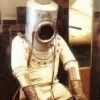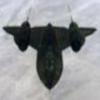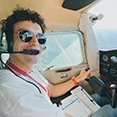-
Posts
351 -
Joined
-
Last visited
About Nomore Shelfspace

Profile Information
-
Gender
Male
-
Location
United Kingdom
Recent Profile Visitors
3,580 profile views
Nomore Shelfspace's Achievements

Established Member (3/9)
809
Reputation
-
Thanks! I like posting to Britmodeller, even though I probably only build three kits a year now...
-
Oddly I recall this and various other basic Airfix fare such as the Saunders Roe 53 being offered as a promotion with orange juice (Suncrush or something equally archaic), where you sent off so many botttle tops or whatever and got the kit of your choice in a plain box with no branding. They were crude even then.
-
Hello and hope everyone is okay, here's one of my now very infrequent models! This is my attempt at Airfix's prehistoric A W Seahawk, which is poor even by the standards of 60 years ago. It is more inaccurate than accurate. My copy was from the early 90's, an indifferent product of the Heller factory and the instructions refer to parts such as the stand that weren't even in the kit. I built it mainly because of my interest in the old RNAS Ford, or HMS Peregrine, which is just down the road from me and saw practically all Naval types during the 1950's. Apart from a lot of Revell Plasto filler, I added parts including the vanes in the air intakes, a cockpit coaming and gunsight, an ejector seat, jet pipes, a pitot tube, main undercarriage doors from sheet, the landing light in the nose, various new undercarriage bits and the two "fins" under the fuselage - I think these are cartridge case deflectors for the cannon, not antenna, although I may be wrong. I removed the weapons pylons. I also carved cannon troughs, sanded the trailing edges of everything that had one, reshaped the tail "bullet" and filled the areas on either side of the front canopy to remove the odd "bulge" which Airfix's designer thought was there. The model was airbrushed with Humbrol matt 90 and 79. Decals went on okay over two coats of Klear and using Klear as a decal agent. Luckily there's not too many... final coat was the indispensable Xtracrylic matt varnish. I do note that brush painting Klear always results in "pimples" which are either air bubbles or flecks of dust - these can be carefully rubbed down with micro-mesh before spraying the Xtracrylic, but this only works here because there's not much surface detail! Final touches were wingtip lights (clear Tamiya acrylic - mine has nearly dried out and had to be revitalised with alcohol - must be Navy) and silver pen for the nose light. I admit it's not the best model I've ever done but it looks like a Seahawk (which itself looks like a flying penguin...), at least from a respectful distance. Hope you like it anyway. Please excuse overspray inside canopy... What RNAS Ford looks like now;
- 21 replies
-
- 37
-

-

-

Airfix 1/48 Spitfire 1a
Nomore Shelfspace replied to Nomore Shelfspace's topic in Ready for Inspection - Aircraft
For your edification gentlemen, here is a (belated) photo of the above model with painted mirror and crowbar that is no longer red. -

Airfix 1/48 Spitfire 1a
Nomore Shelfspace replied to Nomore Shelfspace's topic in Ready for Inspection - Aircraft
Thanks! It does look good, very redolent of the machine and era. -

Airfix 1/48 Spitfire 1a
Nomore Shelfspace replied to Nomore Shelfspace's topic in Ready for Inspection - Aircraft
Yeah, I realised I'd forgotten to paint the mirror after I took the photos... the red crowbar is probably a misconception, don't know where that started. I wasn't sure if this variant did have the wire so left it off. I will have another go at it some time. -
Although I stopped aircraft modelling a while ago, I just thought I'd pick this one up last week. It's an excellent kit but needs work. I am still sure "New Airfix", welcome as they are, put really good Computer Aided Design before buildability! I did take Work in Progress photos but decided just to get to the finished model. The plastic is the well-known Soft Bluey Stuff and has to be treated with care - it just soaks up liquid cements and tube cement instantly melts it. There was no way I was going to give someone in Eastern Europe 8 pounds and wait three weeks for an aftermarket seatbelt printed on sticky paper or something so I made my own from pie case foil. So I didn't get "Supermarine" on the rudder pedals but did get "Birds Eye" on the seatbelts. I used a watchmakers screwdriver to emboss small pieces of foil to make buckles. The interior is tricky - the various bulkheads have to slot into the cockpit walls and these slots need "easing" with a knife etc. before it will all fit. The instrument panel is supplied as a decal which has to go over moulded detail... being mad I just cut out the dials and applied them individually. Some research provided a more accurate colour scheme for the cockpit. I had to file off a lot of plastic from under the cockpit tub before the lower wing would fit properly. Note there is a hole in the bottom of the tub, not to let water out but to accomodate the landing light... this thing has more detail than the old 1/24 scale Spitfire I built when I was (you don't want to know...)- years old! Amused to see another old friend, the pilot figure out of the above mentioned 1/24 scale Spit... complete with his sea boots. Must have been seconded from the Royal Navy. This model is brush painted. It was a bit of an experiment, and I won't do it again. I used the recommended Humbrol paints in two thin coats. The model was then brush coated in Klear, which wasn't enough to prevent problems with the (otherwise very good) decals silvering despite liberal amounts of Decalfix (which is really more of a wetting agent). One more coat would have worked, as I found out halfway through decalling. However, I will definitely go back to airbrushed Xtracolor acrylic if I build another aeroplane, I used to use this method with no problems. It's just all that masking!! I had to airbrush anyway with a coat of Xtracrylic matt varnish (after masking the transparencies...) Only potential problem if you aren't ready for it is the two-piece undercarriage legs... I know Airfix were going for dead accuracy etc. but there must be a less tricky method than fixing the top end of the leg into the undercarriage well before assembling both wing halves, then cementing the rest of the leg onto a hopefully secure stepped joint once everything has been assembled... Weathering was by pastels and a fine brush applied aluminium-ish paint. I used GS Hypo Cement for some of the transparencies - this is a jewellers cement that dries clear and doesn't fog. I actually had to pare down the fuselage top light before it would fit, with the aid of a head magnifier, something I used quite a lot in this build. I am wondering if Airfix could just scale this kit up to 1/32, it certainly looks like they could... Well there it is, as I say a bit of an experiment, I could have done better with the finish but it looks geat on the shelf with my few remaining aircraft!
-
Hello again, if you were watching my "in progress" thread here on this kit, here is the finsihed model. It looks okay, best I could get it really. There was so much rigging I felt I was building a model of a spider's web... The only additions I made were some fine chain instead of string for the anchors (I had to research the way these were stowed) and a new stand out of obechi stained a darker colour - it needs some retouching... I will see about name plates but haven't got round to that yet. There would be more photos but I forgot the golden rule of close-up photography, STOP DOWN, so they are mostly half in focus and I'm not going to set the model etc. up again... maybe I'll add some later.
- 4 replies
-
- 23
-

-

Revell 1/220 Cutty Sark
Nomore Shelfspace replied to Nomore Shelfspace's topic in Work in Progress - Maritime
Okay, THIS looks like the same kit, from 1977... "Quick Build" though...🤔? -

Revell 1/220 Cutty Sark
Nomore Shelfspace replied to Nomore Shelfspace's topic in Work in Progress - Maritime
Finally made some headway on this one. The rigging is in progress, and there is a lot. I don't like the billowing vacform sails and they are extra work so I'll leave these off. I'm not sure of the origin of this kit - an old Revell catalogue (probably 1967) I have only lists the 1/96 version but this doesn't mean it isn't Revell - the sprues have a Heller look to them, I dunno... anyway here it is so far. Filling in and eventually repainting the slots in the deck for the ratlines that aren't supposed to be there... Replacing the moulded ratty lines further forward, wrong but the only way they will line up with the mast... How to fix ratlines to mast with scraps of sheet. Note hole mistakenly drilled in earlier attempt to fix these things... Now I can start rigging. I had enough thread left from the Constitution kit to rig this one as well. I ran the thread through beeswax as shown here, knotting and then applying a drop of cyano to fix. Those 'horns" either side of the bow are in the wrong places but I fixed that... (correction; these are called "catheads". Sorry shipmates.) Correct placement of catheads according to photos of real ship. Always useful... Good progress with running rigging (brown) mostly in place. Sorry about the small photos, even out of my ancient (1999) Olympus C2500L I had to reduce them so they wouldn't take so long to upload! No more photos until finished. See you then. -

Revell 1/220 Cutty Sark
Nomore Shelfspace replied to Nomore Shelfspace's topic in Work in Progress - Maritime
Okay, decided I had to adress this issue properly (not by using a mallet or fire...) - the rear mast assembly needs rebuilding so it dosen't bend backwards like a drunken sailor. Put aside until I can be bothered with it... -
More from the now rarely spotted Nomoreshelfspace!! (I should change that now...). I think this is the only kit I built last year, after a visit to the real ship in Boston, Mass. A ship with a hell of a story, you should look it up. The kit is nice despite dating from about 1955 - judging by the stamp inside one hull half! If you don't misinterpret Revell's typically dud instructions you will be ok. Fit of the aft end of the deck is a bit questionable, those cannon should align with the ports if you get it right... but a good kit compared to their bum-aching Cutty Sark which I am struggling with right now (see "in progress" here). No essential notes here, just that I always prime plastic with matt enamel (in this case sand colour) before painting with acrylic. Stand is scrap mahogany, the supplied one poses a danger to ship and crew! One thing that strikes me is that it's impossible to build a truly "accurate" model of a ship, especially a sailing ship, because they were refitted and even rebuilt so frequently. THis one is really just a representation. That's it for the time being...
- 2 replies
-
- 16
-

-

Revell 1/220 Cutty Sark
Nomore Shelfspace replied to Nomore Shelfspace's topic in Work in Progress - Maritime
Okay, first let me say this kit is rubbish. It just confirms my opinion of Revell Germany as a packaging company. Second, it's no use throwing your toys out of the pram and winding up with nothing, you have to soldier on with it. I'm not sure what they were thinking when they designed this thing because the structure of the lifeboat deck clashes with the midships pair or ratlines. I totally rebuilt the lifeboat deck and relocated it aft of its intended position. It looks wrong, but the ratlines now fit - there are moulded cutouts in the peg rails into which they must fit, ignoring the similar cutouts in the upper edges of the sides where it LOOKS like they should fit... if you follow me so far. The aft mast (not sure if I'm using nautical terms, probably not) is now nowhere near the ends of the aft pair of ratlines, see photo... this is almost comical. They are in the correct slots in the deck as well. I had to tie back the mast with tape and rigging thread so it came anywhere near the top of the ratty lines and glued it with large dollops of Rocket cyano. It leans back much too far as a result. Now looking at the photos of a finished model online, the ratlines are fixed to the top edges of the sides. Really... if you do this the ends will not meet the knuckles on the masts, unless I'm getting something wrong here, but looking at photos of the real ship, I am doing it right! It's a disaster area, but I will finish it. I only bought this after reading poor reviews of the Airfix one... WTF REVELL. Seriously? YUK. -
Hello again after a long time, I used to post aircraft projects here, but they've mostly been sold - I still build the occasional kit of anything that catches my interest, if I have space for it that is... anyway I like sailing ships so I got this thing... 150th anniversary edition, in a huge box containing a poster of the box art, a bag of paints, plastic bottle of cement, the worst paintbrush I've seen in my life and a magazine-like instruction book, in true Revell style taking one numbered step to show where to stick one part, and no historical information on a supposedly historical subject (try Wikipedia...). The drawings are cut -and- paste variations on one view and occasionally misleading - I got the lifeboat structure completely wrong, thanks to the instructions, and had to rip it all apart, breaking most of it, and rebuild it with styrene sheet and brass rod, but more of that later. These photos show how far I got a few days ago - you have to admit the decals actually look quite nice! I used the paint supplied in the kit, why not. The hull cladding was Munt metal which has a brassy colour, not copper, but it looks ok or will do once I've retouched it after all the handling. Nothing special here, I am not a serious ship modeller, it's just a nice model... or will be.... Great, I've just got a photo in off my flickr thing. This is HALF the box it came in, made into a work box. The deck is warped so I just made up a solid hull before anything else. Be careful of those stanchions. Note step 3, "stick two halves of wheelhouse together..." Bit of a jump here, lots of painting.... loads of detail on the deck including the hand pumps and winches, I don't know how old this kit is, or even if it was originally Revell. excuse the bluey colour cast, I was trying out a 1999 vintage Olympus camera! As I pointed out, the Munt metal that clad the Cutty Sark's hull was a brassy colour, I used Revell enamel 95. I undercoated everything with Humbrol matt sand or somthething like that, makes it easier to paint in acrylic, which I prefer. Wouldn't like to have been a sailor on board one of these... Decals aren't bad at all, but need some application of the old Decalfix. Parts fit is rough. The front end of the ship. Really looks quite nice, although I'm sure the figurehead is supposed to be larger...? That's it until I can get more done, and have finished rebuilding the lifeboat tackle...






